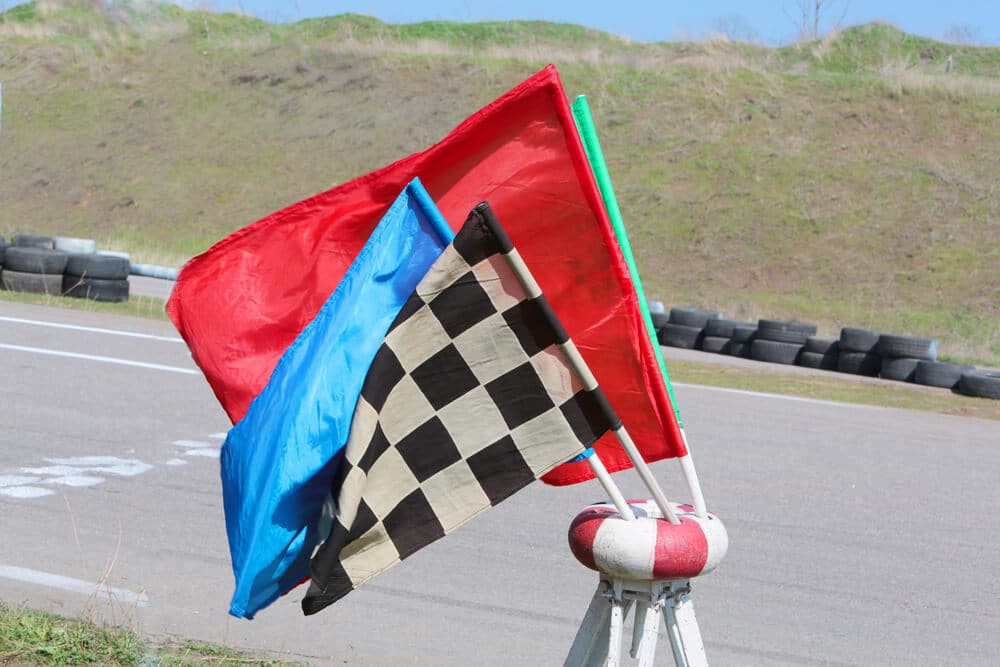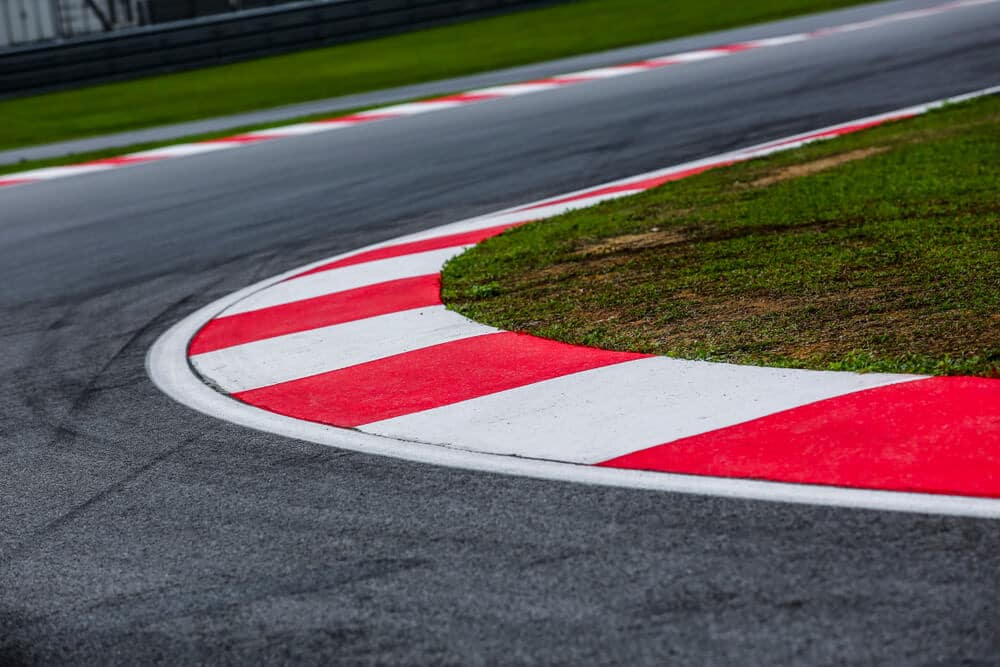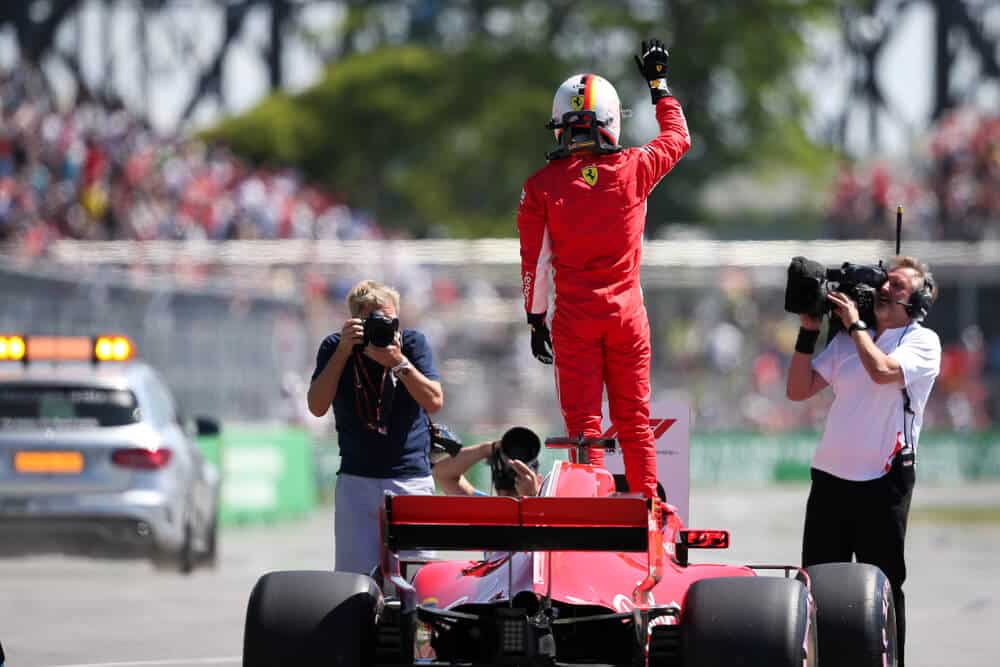The excitement and thrill of Formula One racing can be felt in the air as soon as the starting flag is waved. But what happens when the race is suddenly stopped due to a red flag? Red flags can cause races to be delayed, canceled, or even shortened. It leaves drivers and spectators wondering what will happen next.
In this article, we will discuss the importance of the red flag in Formula 1 races. We will look at when it is used, why it is important, and its effects on race.
What does the red flag mean in F1?
The red flag is a warning used by marshals during Formula 1 races to signal that conditions are not safe enough for the race to continue. When displayed, all drivers must immediately slow down and head back toward the pit lane.
In the event of a race being stopped, cars will drive slowly into the pits. They will then line up in the fast lane at the pit exit. Later they will also be repositioned depending on the restart condition.
Types of incidents that can trigger a red flag
The major incidents that can trigger a red flag in Formula 1 races include serious accidents. It can be debris on the track, bad weather, or any other condition deemed unsafe by race officials.
Additionally, a red flag may be waved when the track environment has been compromised in any way that could threaten safety. Such as broken barriers.
For example, during the 2022 British Grand Prix, a red flag was triggered after an incident at the starting line. George Russell and Pierre Gasly were involved in a collision that sent Zhou Guanyu’s Alfa Romeo spinning off the track and into the catch fencing. Zhou flipped upside down behind a wall. The race was quickly halted by marshals in order to ensure the safety of all drivers and fans alike.
Key Takeaways
Here are some key aspects that you should know regarding the red flags in formula 1:
- A red flag is used to signal drivers to stop racing immediately when conditions become unsafe.
- It is an important safety feature in Formula 1. It allows drivers to stop racing if any dangerous situations arise.
- It is triggered by serious accidents, debris on the track or bad weather.
- When the red flag is displayed drivers must immediately slow down and head back toward the pit lane.
- The length of time that a race is halted depends on the severity of the incident.
- It can be used as an effective tool for marshals to maintain safety during Formula 1 races
What happens during a red flag period
Let’s take a deeper look at what happens during red flag periods in Formula 1.
Once the red flag is displayed, drivers must immediately slow down and head back toward the pit lane. During this time, race officials will assess the situation. They will decide whether they can continue racing or if a restart needs to be organized.
How drivers must respond to red flags
When marshals wave the red flag, all drivers must respond quickly and make their way back to the pits. The flags will be waved together by each steward to catch the attention of every driver on the track.
In addition, electronic boards will flash red – if a driver notices this they need to quickly reduce speed, stop overtaking and make their way toward the pit entrance. After arriving, they must comply with any further instructions from the FIA.
Drivers are allowed to step out of their car when a race is halted and can remain in their respective garages. They have the freedom to talk with the crew about any strategic changes or review race data.
Procedures that are followed when a red flag is deployed
Once the red flag is deployed, specific procedures have to be followed. All cars must slow down and head back toward the pit area. Race officials will then assess the situation and decide if they can keep racing or need to restart the race.
As lights at the exit of the pits turn green, cars should move onto the track behind the safety car. When reaching the last corner, the safety car will leave the convoy and move to the pit lane. All cars will then be slotting back into their original positions on the grid.

Duration of red flag
Let’s take a look at how long a red flag period typically last:
F1 race
When a red flag is deployed during Formula 1 races, the duration of it can vary depending on the situation at hand.
Marshals must clean and repair any damage done to the track. They also need to ensure that weather conditions are favorable for a safe race. Generally speaking, the time limit regulation regarding F1 races states that they should be completed within a three-hour interval. It is important for the red flag to last much less than that to allow time to race.
It is also worth noting that, due to safety concerns, if conditions do not improve and become safe enough for drivers in this time frame, then the race may be canceled instead. This means that it is crucial that marshals are quick and effective in their response so as to avoid any unnecessary delays.
Practice session
There is a slight difference in how red flags are handled in practice sessions and during actual races. We know that the duration of practice sessions is based on time and it gives drivers a chance to practice in a variety of circumstances.
If a red flag is displayed, the clock does not stop, and this reduces the amount of time left in the session. This can be frustrating for some teams. Especially as they won’t be able to use all of the allotted time for improvements and set-ups before qualifying begins.
Qualifying session
When a red flag is deployed during qualifying sessions in the F1, there is no time limit; this means that the clock stops running when the red flag is waved. The session will then resume once the situation has been rectified, allowing drivers to get back on track and continue their race strategies.
Impact of red flags on the race
Now that we understand the procedures for a red flag in the F1 let’s take a look at its impact on the race.
Effect on driver strategies and positions
When a race is halted due to a red flag, it changes the strategies of the drivers. They must now adjust their driving to take into account any track repairs that have been made and make strategic decisions based on the new conditions. This can cause some drivers to gain an advantage over others, as they may know how to best maneuver around the altered track.
Moreover, the drivers’ positions on the grid can also be affected by a red flag. As the cars are lined up in their original positions on the grid after a red flag, this gives certain drivers an advantage over others.
How the length of a red flag period can affect the outcome of the race
The duration of a red flag period can also have a significant impact on the outcome of the race. If the red flag lasts too long, then there may not be enough time left to complete the race, so it could cause the race to be canceled altogether.
On the other hand, lifting a red flag too soon could lead to dangerous conditions on the track and put drivers at risk. It is, therefore important that marshals assess any changes to the track and weather conditions carefully to ensure that the race can be resumed in a safe environment.
There have been some instances when a race was completely halted due to circumstances beyond the control of F1 officials. This usually happens during extreme weather conditions.
For example, during the Belgian GP in 2021, visibility was so poor, and the track conditions were deemed too dangerous that the race was stopped after only four laps behind the Safety Car. This was the shortest race in history.
Other colored Flags in Formula One
Apart from the red flag, there are also other colored flags that are waved in Formula One. Let’s take a look at some of them:
| Flag | Meaning |
| Blue flag | Blue flags are waved in Formula One racing when a driver is being lapped by another traveling at a higher speed. |
| Black flag | A black flag indicates disqualification in Formula One races, requiring the driver to return to their pits and end their race immediately. |
| White flag | It is used to signal the presence of a slow-moving vehicle such as a service/safety car or any miscellaneous vehicles on the track. |
| Checkered flag | The chequered flag in Formula 1 indicates the end of a race, practice, or qualifying session. |
| Red flag | The red flag is used during Formula One races, qualifying sessions, and practice sessions to immediately stop the activity due to the danger posed to drivers or spectators. |
| Green flag | Green flags signal that it’s safe to race as normal, without worrying about any obstructions on the track – this allows drivers to overtake and continue normal racing conditions. |
Frequently Asked Questions
A red flag in Formula One is used to indicate an immediate halt of the race due to dangerous conditions, such as excessive debris on the track, bad weather or a crash. Red flags can also be deployed if there are technical difficulties preventing the race from continuing normally.
During a red flag period in Formula One, all cars must immediately stop racing and return to the pits. Marshals will assess the track conditions or any other dangers that may have caused the red flag to be deployed. After assessing the situation, the race director may decide to resume the race in a safe manner.
A red flag period can affect the outcome of a Formula One race in a number of ways. It can cause delays, which may lead to some drivers having an advantage over others when the race is resumed. Additionally, if a red flag is deployed too late or lifted too soon, it can put drivers at risk and potentially affect the results of the race due to conditions suiting some drivers more than others.
Conclusion
The red flag is an important safety feature in Formula One and it is used to protect drivers and spectators from any potential danger. It is used to signal an immediate halt of the race due to dangerous conditions which could put the drivers or spectators in harm’s way.
Although a red flag period can have an impact on the outcome of a race, it is important to remember that it is deployed for the safety of everyone involved. Therefore, all drivers must respect and abide by this signal whenever it is waved.



